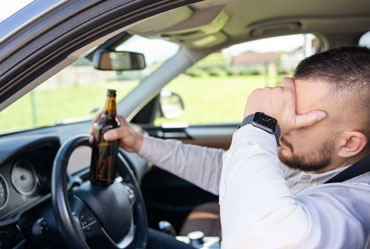Search

Drunk driving laws in Wisconsin come with a maze of legal jargon and acronyms that can be overwhelming. Whether you’re researching for legal knowledge or facing an alcohol-related traffic charge, understanding these terms is crucial. This guide breaks down the key acronyms—starting with BAC—and explains their meanings and implications under Wisconsin law.
BAC = Blood Alcohol Concentration
BAC, or Blood Alcohol Concentration, measures the percentage of alcohol in a person’s bloodstream. It’s the central figure used in determining whether a driver is legally intoxicated. In Wisconsin, the legal BAC limits are:
A BAC above these thresholds can lead to arrest and prosecution, even if the driver doesn’t seem visibly impaired.
Law enforcement may use the following to determine BAC:
Breath and blood tests are most often used, and refusal to submit can lead to additional penalties under Wisconsin’s implied consent laws.
Unlike many other states that use DUI (Driving Under the Influence), Wisconsin uses the term OWI, which stands for Operating While Intoxicated. It encompasses more than just driving—it includes having control over a vehicle while under the influence of alcohol or drugs, even if the vehicle is not moving.
An OWI charge can be based on:
Penalties for OWI include fines, jail time, license suspension, and installation of an ignition interlock device (IID) for repeat offenders or high BAC levels.
PAC stands for Prohibited Alcohol Concentration. This is the statutory BAC level you’re not allowed to exceed while operating a vehicle. A PAC charge often accompanies an OWI charge but is technically separate.
You can be charged with PAC even if you don’t appear impaired—as long as chemical tests show a BAC above the legal limit.
If you’re convicted of an OWI offense in Wisconsin, particularly with a high BAC (0.15% or more) or if you’re a repeat offender, the court may order the installation of an Ignition Interlock Device (IID).
An IID requires the driver to blow into the device before starting the car. If alcohol is detected, the vehicle will not start. The driver must also cover installation and maintenance costs.
After a drunk driving conviction, you may need to file an SR-22. This is not insurance itself, but a form your insurer files with the state to prove that you carry the minimum required auto insurance.
Failure to maintain an SR-22 can result in license suspension. Most drivers must keep an SR-22 on file for three years after an OWI or PAC conviction.
Under Wisconsin’s implied consent law, all drivers automatically consent to BAC testing if stopped for suspected OWI. Refusing to submit to a breath or blood test can lead to:
Refusal charges are serious and can be harder to defend than the OWI charge itself.
Understanding these terms—BAC, OWI, PAC, IID, SR-22, and Refusal—is essential for anyone dealing with drunk driving charges or trying to avoid them. These acronyms represent not just legal concepts but real consequences that can affect your driving privileges, finances, and criminal record.
Navigating Wisconsin’s drunk driving laws is not simple, and the legal terminology only adds to the complexity. If you’re charged with OWI or related offenses, knowing what these acronyms stand for is the first step toward building a strong defense.
Consulting a knowledgeable OWI attorney can help you understand your rights, challenge the evidence, and work toward minimizing penalties or dismissing charges altogether.